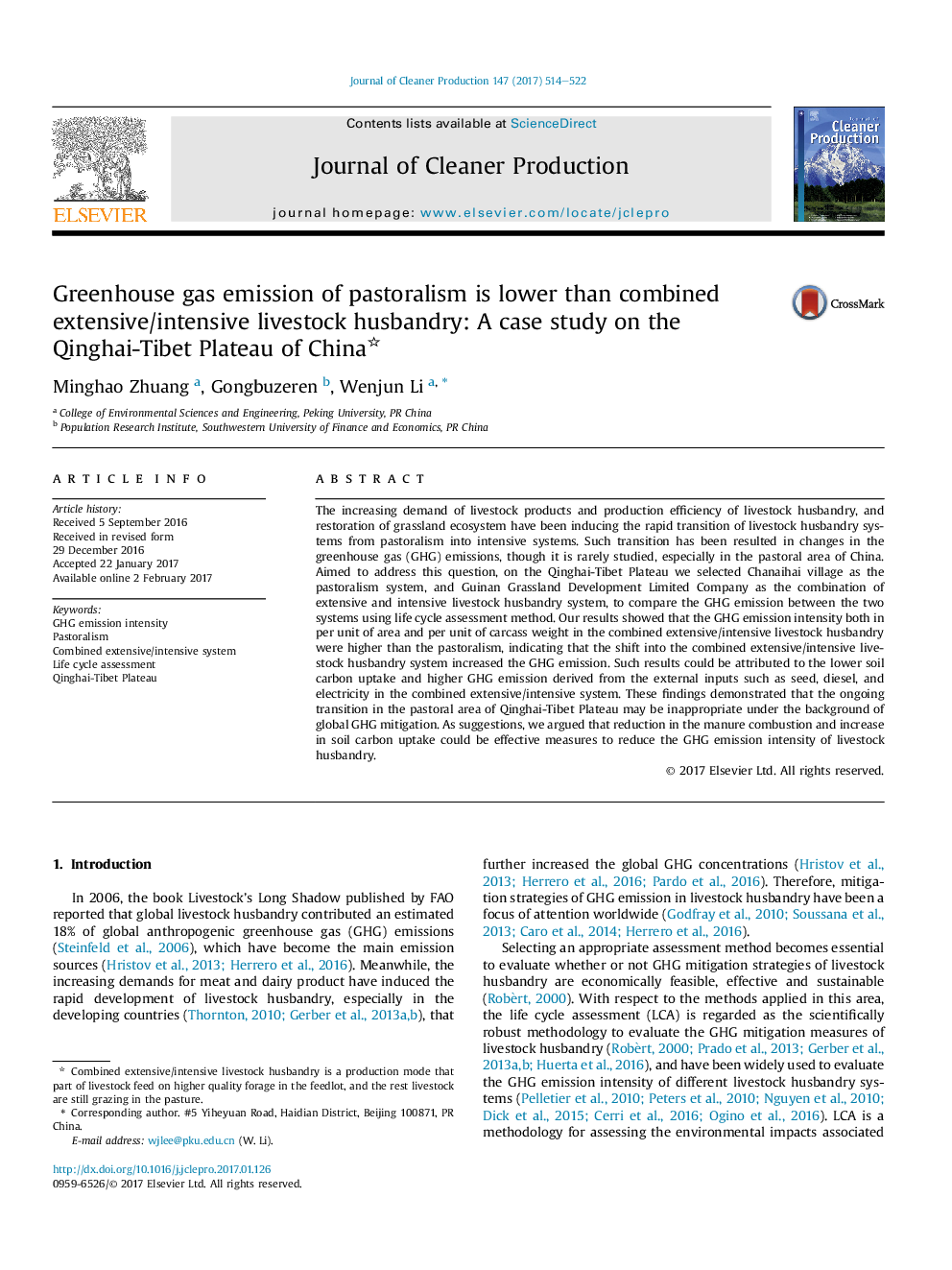| Article ID | Journal | Published Year | Pages | File Type |
|---|---|---|---|---|
| 5481499 | Journal of Cleaner Production | 2017 | 9 Pages |
Abstract
The increasing demand of livestock products and production efficiency of livestock husbandry, and restoration of grassland ecosystem have been inducing the rapid transition of livestock husbandry systems from pastoralism into intensive systems. Such transition has been resulted in changes in the greenhouse gas (GHG) emissions, though it is rarely studied, especially in the pastoral area of China. Aimed to address this question, on the Qinghai-Tibet Plateau we selected Chanaihai village as the pastoralism system, and Guinan Grassland Development Limited Company as the combination of extensive and intensive livestock husbandry system, to compare the GHG emission between the two systems using life cycle assessment method. Our results showed that the GHG emission intensity both in per unit of area and per unit of carcass weight in the combined extensive/intensive livestock husbandry were higher than the pastoralism, indicating that the shift into the combined extensive/intensive livestock husbandry system increased the GHG emission. Such results could be attributed to the lower soil carbon uptake and higher GHG emission derived from the external inputs such as seed, diesel, and electricity in the combined extensive/intensive system. These findings demonstrated that the ongoing transition in the pastoral area of Qinghai-Tibet Plateau may be inappropriate under the background of global GHG mitigation. As suggestions, we argued that reduction in the manure combustion and increase in soil carbon uptake could be effective measures to reduce the GHG emission intensity of livestock husbandry.
Related Topics
Physical Sciences and Engineering
Energy
Renewable Energy, Sustainability and the Environment
Authors
Minghao Zhuang, Gongbuzeren Gongbuzeren, Wenjun Li,
